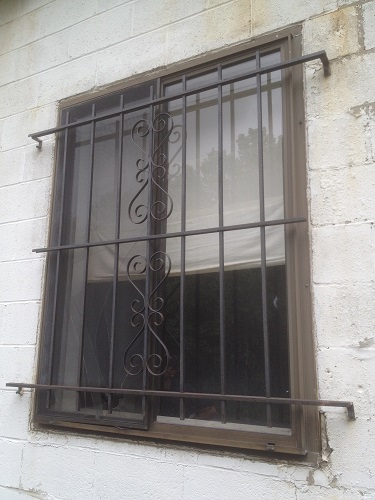
By David DeStefano
The iconic quote “Fools rush in where angels fear to tread” is a line from a poem published in 1709 by English poet Alexander Pope. It has since been used, modified, and changed slightly by numerous singers and songwriters from Rick Nelson to Frank Sinatra, becoming a fairly common saying. For members of the fire service, the saying rings as true today as any version and at any time from 1709 to the present.
RELATED FIREFIGHTER TRAINING
Size-Up and Tactics for Structures of Lightweight Construction
Aggressive Command and Tactics
Pre-Incident Intelligence: Egress
Urban Search and Rescue and Structural Collapse: It’s Everyone’s Job to Know
It is fully expected that firefighters enter dangerous situations for the protection of life and property. We have a responsibility to act aggressively to discharge our duties whenever possible. From our first day at the fire academy, we are indoctrinated in the risk/benefit analysis to guide us in making appropriate decisions about levels of engagement. Although our work environment sometimes seems to be a place where angels would fear to tread, we should heed the first part of the quote and not make ourselves the fools that rush in.
On arrival at many of our incidents, there are a number of predictors that urge an extra cautious approach, limited offensive engagement, or defensive posture. If the observable or previously known elements are not acknowledged and considered in our strategy and tactics, we will indeed be the fools rushing in!
(1) Fire escapes generally receive little or no maintenance; they should always be used cautiously, taking care not to overload with firefighters or equipment. (Photos by author.)
Lightweight Construction
Before entering a fire involving (or likely to involve) structural components of a lightweight building, remember the old adage, “Stick-built buildings burn down; truss-built buildings fall down.” The roof and floor systems of these occupancies have a very short life span when under attack from fire. If fire is believed to be involving the loft of a lightweight building, members operating on its roof should do so from the relative safety of an aerial ladder or platform. Likewise, interior companies should be aware of the high potential for failure of floor systems they may be operating on or underneath.
Limited Entry and Egress Points
Firefighters must realize that many types of occupancies or portions of occupancies may feature a limited access profile. Certainly, large industrial buildings come to mind when planning air management or the difficulty in rapidly accessing a member needing assistance. However, fires in s- called “routine” occupancies may present a challenge to access and make emergency egress. Common strip mall stores feature a door and display windows on side A, but often they have only one other means of egress—a door on side C; these doors are almost always heavily fortified against burglary. If the primary entrance/egress on side A is made inaccessible because of fire conditions or interior collapse members may need to make egress using the side C door.

(2) If not removed proactively, window bars on commercial or residential occupancies delay entry and may prevent emergency egress.
Once located, this door may present a forcible entry challenge from the interior because of the presence of locking slide bolts, drop bars, and other security devices. Before committing deeply to interior operations in these occupancies, company officers should be ensured that other members have been assigned to forcible entry on side C to ensure a secondary means of egress. Buildings with various types of window covers, shutter systems, or burglar bars present similar access and egress problems.
RELATED: DiRenzo on Firefighter Egress from an Upper Floor ‖ Mittendorf on Reading a Building ‖ Saalfrank on Maintaining Access and Egress
Approach cellar fires in residential or commercial occupancies with caution for similar reasons. In these scenarios, it may be virtually impossible to provide adequate ventilation and additional access points. Firefighters operating belowgrade must especially be aware of the limitations of their air supply and always remain oriented to their means of egress. Members cannot advance to the point where they outstrip their ability to withdraw safely in an emergency.
(3) Roll-down doors, now common even in suburban areas, delay entry and ventilation as well as emergency egress.
Structural Concerns
Identifying buildings in your district that pose particular structural hazards is an integral preincident component in avoiding the “rush in” mentality. Take every possible opportunity to obtain reconnaissance of the “battlefield” in which you may have to fight. Nearly all incident operations will have numerous obstacles that will be easy to miss if a size-up is shortened during a rush to stretch a line or enter for a search. Defects like broken steps or connection points on fire escapes or the tell-tale stars or diamonds that indicate the presence of tensioning rods in masonry construction are easy to overlook during a rush to engage. However, firefighters that are already thinking of these problems because of preincident reconnaissance and continual size-up and awareness are likely to avoid a catastrophic event by planning strategy and executing the tactics to manage the threat.
(4) Consider the presence of lightweight truss construction when evaluating the viability of interior operations.
Occupancy Hazards
Consider concerns specific to the occupancy specific when deciding the level of interior commitment. Buildings are must vulnerable during construction, demolition, or renovation. Hasty deployment deep into a commercial building under demolition is dangerous when advanced fire conditions are present on arrival. Every aggressive company wants to make a swift interior attack, but when quick confinement is unlikely because of fire conditions or resource limitations, making a major interior commitment may be akin to Russian Roulette. Entering weak buildings even before a fire starts requires an abundance of caution, an understanding of the potential weaknesses specific to each structure, and well-disciplined firefighters who understand the difference between aggressive tactics to preserve life and property and recklessness.
(5, 6) Demolition is one of the most dangerous phases in the lifecycle of a building.
A careful size-up of fire load within the occupancy is important for concerns of stability; the potential volume of fire; and the ability of firefighters to navigate and make a rapid egress, if necessary. When considering heavy fire loads, members often restrict their thoughts to large industrial or commercial occupancies. However, attempting line advancement or search operations in so called “hoarder houses” may pose similar dangers of heavy fire conditions, collapsing stacks, and piles of contents as well as early structural failure.
Buildings that are not legitimately occupied and appear vacant pose a variety of threats to members, ranging from structural instability to limited access and the unknown hazard of the contents. Although you must make an effort to conduct search operations as well as locate, confine, and extinguish fires aggressively, making a risk/benefit analysis is key to avoid rushing to commit to a losing strategy. The location and extent of the fire as well as the potential hazards in the building must be factored into this analysis.
(7) Firefighters should note the presence of tensioning rods, often indicated by stars or diamonds on exterior masonry walls. Consider the effect the fire will have on the structure and the contents with respect to collapse potential.
Extent of Fire and Resources
Although every aggressive engine or truck company wants to make an effective interior attack and conduct thorough search operations, members must be aware of the limitations placed on them by their level of resources as well as the location and extent of the fire. First-in units rushing to commit to an interior attack on a marginal fire without proper support may place those firefighters in a losing scenario that could result in companies being overwhelmed by fire conditions.
Company officers conducting interior operation must also use sound judgement when gauging their level of progress during fire attack and search. Virtually every chief officer can recount incidents where the “sit-reps” from interior units were far from accurate when reporting their progress as well as a unit’s ability to quickly knock down a large volume of fire. Company officers and chiefs must take care not to overestimate the capability of deployable resources in a rush to commit to extended operations.
The preceding paragraphs have touched briefly on some of the many hazards firefighters may face by rushing to commit themselves without adequate planning, size-up, and situational awareness. The best fire companies are comprised of aggressive firefighters that are well equipped, well trained, and well lead. Each facet contributes equally to accomplish a safe and effective fireground operation. Be sure that your company fully understands the challenges presented by each incident.
 David DeStefano is a 26-year veteran of the North Providence (RI) Fire Department, where he serves as captain of Ladder Co. 1. He was previously assigned as a Lieutenant in Ladder 1 and Engine 3 and a firefighter in Ladder 1. He has a master’s degree in public administration and a bachelor’s degree in fire science. He is an instructor/coordinator for the Rhode Island Fire Academy and teaches a variety of fire service topics throughout Southern New England. He can be reached at dmd2334@cox.net.
David DeStefano is a 26-year veteran of the North Providence (RI) Fire Department, where he serves as captain of Ladder Co. 1. He was previously assigned as a Lieutenant in Ladder 1 and Engine 3 and a firefighter in Ladder 1. He has a master’s degree in public administration and a bachelor’s degree in fire science. He is an instructor/coordinator for the Rhode Island Fire Academy and teaches a variety of fire service topics throughout Southern New England. He can be reached at dmd2334@cox.net.
Safety in the Prolonged Zero-Visibility Environment
The Big Three
10 Tips for Truckies
Search That Saves Lives
A Victim of Your Own Success



